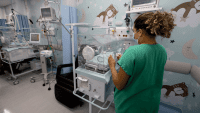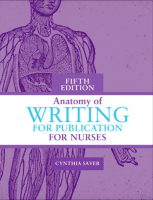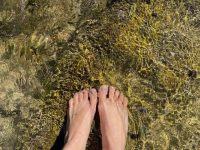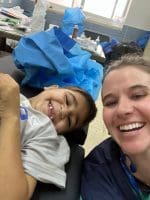What’s it like for faculty to teach in another country? This article gives the reader a glimpse into the experience through the international travel of four faculty members.
Each faculty member chose a single transformative event of informed personal knowing that shaped their views of transformative international learning. These professionals use storytelling as a method of describing Mezirow’s “disorienting dilemma” (an inner experience of disequilibrium). Such a dilemma can be sudden or build over time. Discover how these faculty members, faced with external and internal crises, dealt with their situations. First, it is important to understand the concepts of transformative learning and disorienting dilemmas.
About transformative learning and disorienting dilemmas
Transformative learning was introduced by Jack Mezirow in 1978 when he described the experience of women returning to college. In 1991, Mezirow wrote, “Transformative learning, using critical reflection, results in the reformulation of understanding one’s experience.” By developing methods of reflecting on the disequilibrium that results from disorienting dilemmas, initiated by internal or external personal crises, perspective transformation can occur.
Disorienting dilemmas (DDs) are also opportunities to expand personal ways of knowing. Carper described personal knowing as the development of knowledge through experience and participation. International travel, especially during a first visit to another country, often leads to varying levels of internal or personal crises. Internal DDs can occur as a result of changes in weather, jet lag, or intestinal distress from a change in food (internal crisis). External personal crises can occur as a result of reactions to class distinctions, unfamiliar social norms, or even differences in nursing practices. In our experience, DDs have been an important part of promoting deep learning through immersion in another culture.
The following stories describe significant events that resulted from international travel as visiting professors. Each author self-selected the following exemplars after reflecting on significant learning experiences during travel.
From China to the United States
Background. In China, it’s very common for female faculty to work only until the age of 55. After completing my master’s degree, I returned to my hometown and joined the faculty at my medical college. In my area of China, being a mother, wife, and respected faculty member at 35 years of age is the time to work and enjoy life. I am not expected to continue my education to doctoral studies as a woman since I am over 30 years old and have a young child and a husband who works in another city and is seldom at home.
Disorienting dilemma. My view about aging totally changed when I came to the United States as a visiting scholar in the fall of 2012. I quickly learned that obtaining a doctorate after the age of 35 years was common. One of my mentors pursued her Ph.D. when she was 45 years old and is now 57. She is well past the time of retirement from a Chinese perspective. At 57 years old she works very hard, spends a lot of time helping others in research and developing international partnerships. Another mentor is 73 years old and still works full time as the director of a nursing program. I was shocked by the age of faculty and their levels of energy.
Perspective transformation. My perspective about my career has been totally changed. The possibility of completing a Ph.D. may open up an opportunity to me even at 40 years of age. I plan to enter a doctoral program when my daughter is older.
From Europe to the United States
Background. After several successful years of faculty exchanges between our public university and a small European university, two students from a European country came to spend several weeks on campus as part of a global community health class. It was a first for the department and excitement was high. During the initial days of the visit, the students asked to attend a national rally of a well-known political leader. The students were taken to the event as a way to introduce them to the American political system. Upon arriving at the convention, an older gentleman overheard the students talking about their excitement and generously offered three tickets to the front row area of the event.
The excitement in the convention center was most accurately described as that of a Beatles concert. As the speakers finished their presentations, the keynote speaker came on stage to the shouts and adulation of a screaming crowd of several thousand people, many of whom were seniors.
Disorienting dilemma. From the beginning, the speaker launched into an attack on the health care system of the same country the students were from. Within seconds, the students’ excitement turned to shock and despair. My self-image as a protector and facilitator of learning was transformed to feelings of inadequacy and failure. There was no way to leave the event, because of the location of our seats in the front. It took several days of debriefing the students to re-establish a general sense of goodwill and psychological safety for the students.
Perspective transformation. In the span of a few moments my view of myself as a facilitator of learning turned to one of being derelict in my duty as a protector of the students. I felt that I had let them and both universities down by failing to consider all the possible consequences of taking the students to an event I had not experienced before.
From the United States to Africa
Background. In order to understand my disorienting dilemma it is important to give the reader a glimpse into my psyche as an American who is Black and of African descent. I have been at odds with the variety of labels affixed to Americans who are Black, including Negro, Colored, Afro-American (a hairstyle), Black, and most recently African-American. For the last 30 years the racial group I identified with was “Black.” Based on societal expectations and their comfort level, I settled into being labeled “African-American.” This assumption was shattered when I traveled to Africa and I was identified as Black.
Disorienting dilemma. Upon arriving on the African continent, I felt at home. I saw many beautiful women with short hair and shaved hair. Some were bald. However, the Africans I met seemed to resent my inference of being “African-American.” This caused some distress, since in my homeland I was not embraced/accepted as an vAfrican-American.” This shattered my sociocultural assumptions of “who am I.” I felt confused because with my peer group I was an “African-American” and with my ancestry group I was a “Black American.”
Perspective transformation. Luckily, I was not alone in this dilemma, as the other members of the group experienced the same encounters and reactions. My transformative learning experience changed how I viewed my place in the world. I had always believed I was an American who happened to be Black and this encounter validated my assumptions as accurate. I am not a hyphenated American.
The trip finished with a visit to the historic slave castle on the Ivory Coast. This was the door of no return for a slave. The smell of women’s blood was still evident in the women’s quarters. At the beginning of this journey I saw the world as Black and White. Anyone who had color was put into the black box and others into the white box. My worldview has transformed to include the various shades of color with all the inherent diversity. I now approach diversity from the perspective of inclusion rather than exclusion.
From the United State to Afghanistan
Background. The intention of my global role as a nurse expert is to be an ambassador for my discipline and the United States. In 2006, I was honored to join a group of American and Canadian nurses who volunteered to visit Wazir Akbar Khan in Afghanistan for a month. Although my family thought traveling to Afghanistan may not have been safe, I felt called to provide this service as a professional nurse and Moslem Muslim who believed in the values of international service.
Disorienting dilemma. Living at the margins of society in a war-torn country like Afghanistan provides a daily reminder of the fact that you do not know if you are going to survive the day. This awareness was mentally and physically exhausting. One day while speaking with a local clinician I learned that the staff questioned our motives for volunteering.
Some nurses thought our mission was to convert them from Islam to Christianity. I was shocked that the local clinicians questioned our motives, given the extreme personal sacrifice this trip entailed. I wanted to clarify our motivation to put our colleagues at ease.
I asked the translator to explain how his team arrived at this conclusion. The answer was “despair” from years of turmoil beginning with the Russian occupation decades ago to the current US intervention; many people, including nurses, have lost hope. They could not conceive of Western nurses traveling across the globe with a singular goal of helping other nurses while expecting nothing in return.
Perspective transformation. After some heartfelt conversations with nursing leaders we clarified our intentions and continued to provide a full schedule of daily patient care, staff development, and curriculum planning. We ate in the cafeteria with the staff. We also enjoyed the beautiful landscape of Kabul in spite of the hundreds of bullets holes in the walls of homes, hospitals, and even Kabul University.
During the trip there were many days we thought we would never survive. In spite of the turmoil, I would return to Afghanistan if given the opportunity. Travel brings people closer together and helps us understand each other.
Power of story
Storytelling is an important technique for sharing experiences and passing on shared knowledge. International travel transforms everyone who ventures out of the comfort zone. The experiences are priceless to us. Being immersed in another culture with nursing colleagues highlights more similarities than differences in practice. Thus, we recommend all faculty members take the first step to immerse themselves in another culture.
Qilian He is an assistant professor at Medical College of Qing Hai University. Marilyn Smith-Stone, Ora Robinson, and Asma Taha are all assistant professors in the Department of Nursing at California State University San Bernardino.
Selected references
Gaydos HL. Understanding personal narratives: an approach to practice. J Adv Nurs. 2005;49(3):254-9.
Grassley JS, Nelms TP. Tales of resistance and other emancipatory functions of storytelling. J Adv Nur. 2009;65(11):2447-53.
Mezirow J, Transformative dimensions of adult learning. California: Jossey-Bass; 1991:91.
Dirkx J, Mezirow J. Musings and reflections on the meaning, context, and process of transformative learning: a dialogue between John M. Dirkx and Jack Mezirow. Journal of Transformative Education. 2006;4(2):123-39.
Christoffersen JE. Leading a study-abroad group of nursing students in Nicaragua: a first-timer’s account. Nurs Forum. 2008;43(4):238-46.
Garner BL, Metcalfe SE, Hallyburton A. International collaboration: a concept model to engage nursing leaders and promote global nursing education partnerships. Nurs Educ Pract. 2009;9(2):102-8.
McMillan LR. Exploring the world outside to increase cultural competence of the educator within. J Cul Divers. 2012;19(1):23-5.
Smith-Stoner M, Let international travel transform you. American Nurse Today. 2008; 3(3).

















